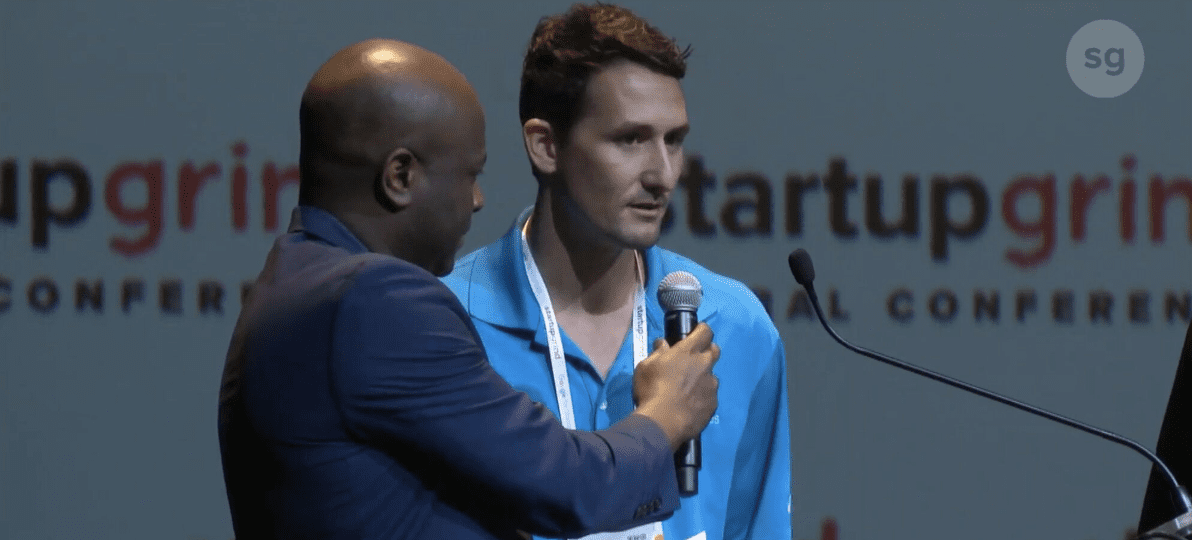By Nicholas Mohnacky, Guest Contributor
Last month I received the great honor of an invitation to exhibit my team productivity-focused enterprise software, bnotes, at Startup Grind Global, the world’s largest independent startup conference that brings together more than 300 startups, 250+ top-tier investors, several dozen world-class speakers, and more than 8,000 total attendees.
Our team’s experience at the show provided invaluable networking opportunity and planning insights. The tactical ideas and feedback we brought home are already being applied to our overall strategy for the future of bnotes, and we hope our takeaways from this experience also prove valuable to South Florida’s insane pool of tech talent as you prepare for future opportunities to showcase your products. Here are a few key tips from first-time exhibitors.
Defining your objectives in advance will help to ensure you walk away with a measurement for success. Your current position on the ladder towards you goal should help you understand what your aiming to accomplish at a conference like Startup Grind. For us, we’d defined the following goals as: build awareness of our product’s unique market position among potential customers while challenging key assumptions, and gain an intimate understanding of the venture capital landscape.
Consider the optics of your display as a visual representation of your brand. A few business cards on a high top is probably not representative of who you see yourself to be or how you desire others to perceive you. With Startup Grind, creativity can be a challenge, as everything has to fit on the table they provide you. In our experience, the best decision we made for our booth was to buy a large flat screen to serve as our backdrop on which we looped our bnotes product demo. This at least ensured that passerby traffic had the opportunity to understand what we were exhibiting and that those we met with were also taking in the user experience as we walked them through our features.
As for collateral, I would recommend two basic takeaways- a super simple brand reminder, such as mini business cards or branded (useful) schwag, and a one-sheeter, such as a fact sheet or infographic. The majority of attendees are traveling- many internationally- and are most likely working or investing in advanced tech industries. Printed product decks are archaic content to this audience.
Understand your audience and do your diligence before you find yourself in a position to exchange dialogue with thousands of people. The field of delegates at an event of this scale range from investors to project managers and CMOs, and everyone in between. Be prepared to pitch each group of individuals accordingly, to ask key questions, and most importantly, to listen. Exhibiting at Startup Grind can be a trial-by-fire lesson in communicating effectively and succinctly in a way that resonates.

Most importantly, learn from investor insights. bnotes had been inducted into Startup Grind’s Top 50 Accelerate Startups program, which came with a variety of unique opportunities to refine our sales pitch. We took part in curated “office hour” investment meetings, a main stage pitch and a designated exhibition day, all of which provided an invaluable understanding if how to position bnotes for greater venture capital. Atlassian, Oracle, SAP, Intuit, NextGen Ventures, Bullpen Capital, ScaleVC, and Beta Boom were just a few of the names in the room for these various workshop events, and representatives from these companies decided which startups interested them the most. Their insights from this powerful group of investment decision-makers collectively create a very clear, straightforward path for navigating your investment strategy:
- If your revenues are $10k+/mo, your company will likely be attractive to investors
- If you are pre-revenue, it’s critical to focus on unit economics to prove scalability
- Current enterprise SaaS companies are being valued at 6-8x multiples.
- “There is an irrational element to making an investment so you need to establish a personal relationship.” Verbatim investor advice.
- Landing venture capital is like elephant hunting. Don’t cast a wide net filled with uninterested investors. Be methodical about your outreach and know who is interested in and relevant to your product.
- At the conclusion of your Seed round, Venture Capitalists should collectively own no more than 25% of your product.
- Founders should maintain at least 50% of equity after Series A round.
The journey leading up to Startup Grind Global was anything but easy. Creating demand is becoming more and more challenging as we see solutions come online today that claim to solve the challenges of yesterday’s solution. If Startup Grind Global or a similar conference is a future goal for your team, remember that their “talent scouts” are looking for startups that have managed to build organic demand, and the more you focus on where you are today in the process of creating that, the better your chances will be every step of the way as you move through the process to global adoption.
Nicholas Mohnacky is co-founder of West Palm Beach-based bnotes, which creates software that helps its users work together and advance as a team.
- An innovation is born: New mom and FIU student pitches her baby bottle monitor on Shark Tank - April 12, 2024
- Miami: the Dubai of the Western Hemisphere - February 20, 2024
- What I learned facilitating an AI hackathon for ACT House in Miami - February 16, 2024




